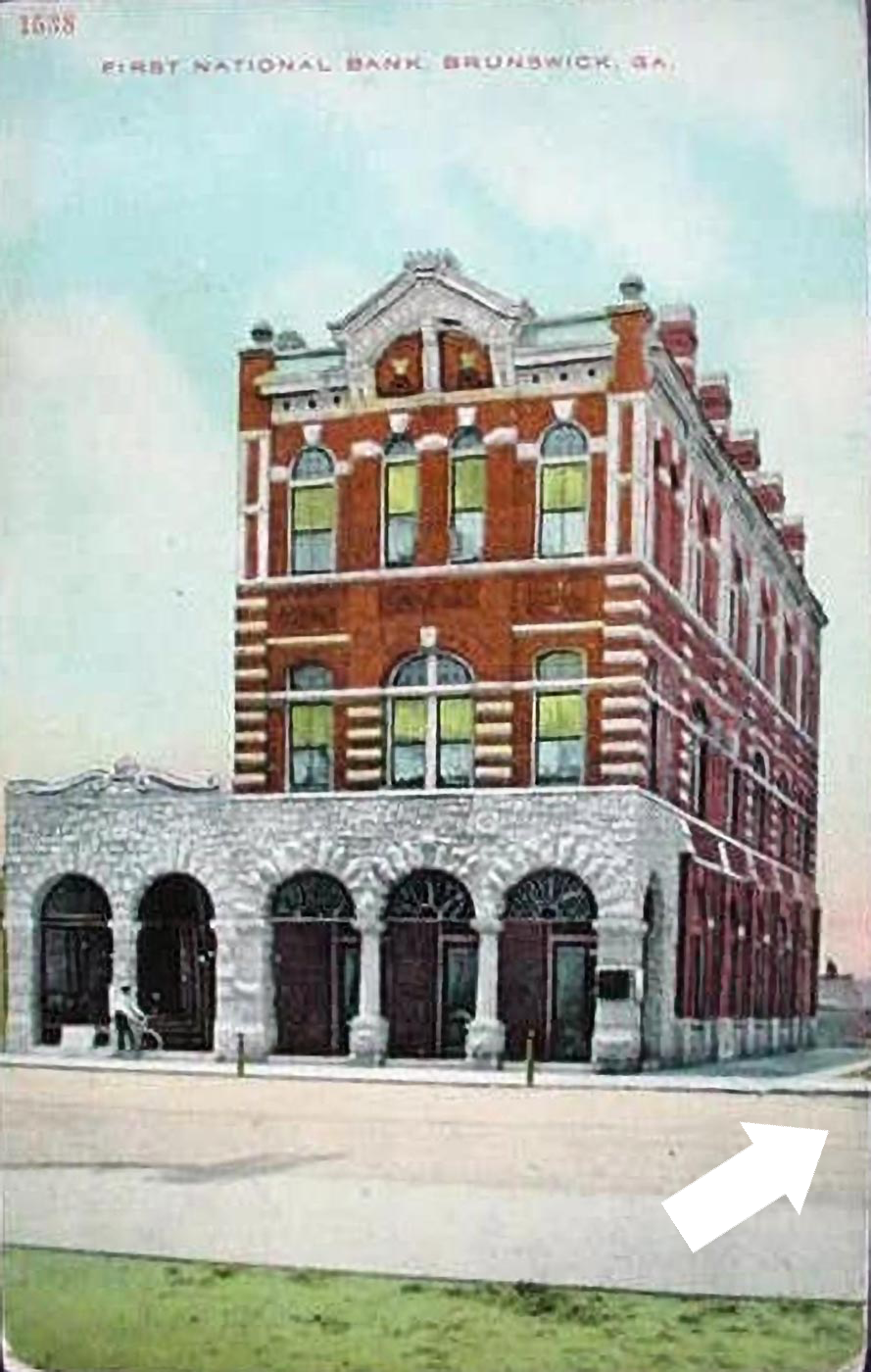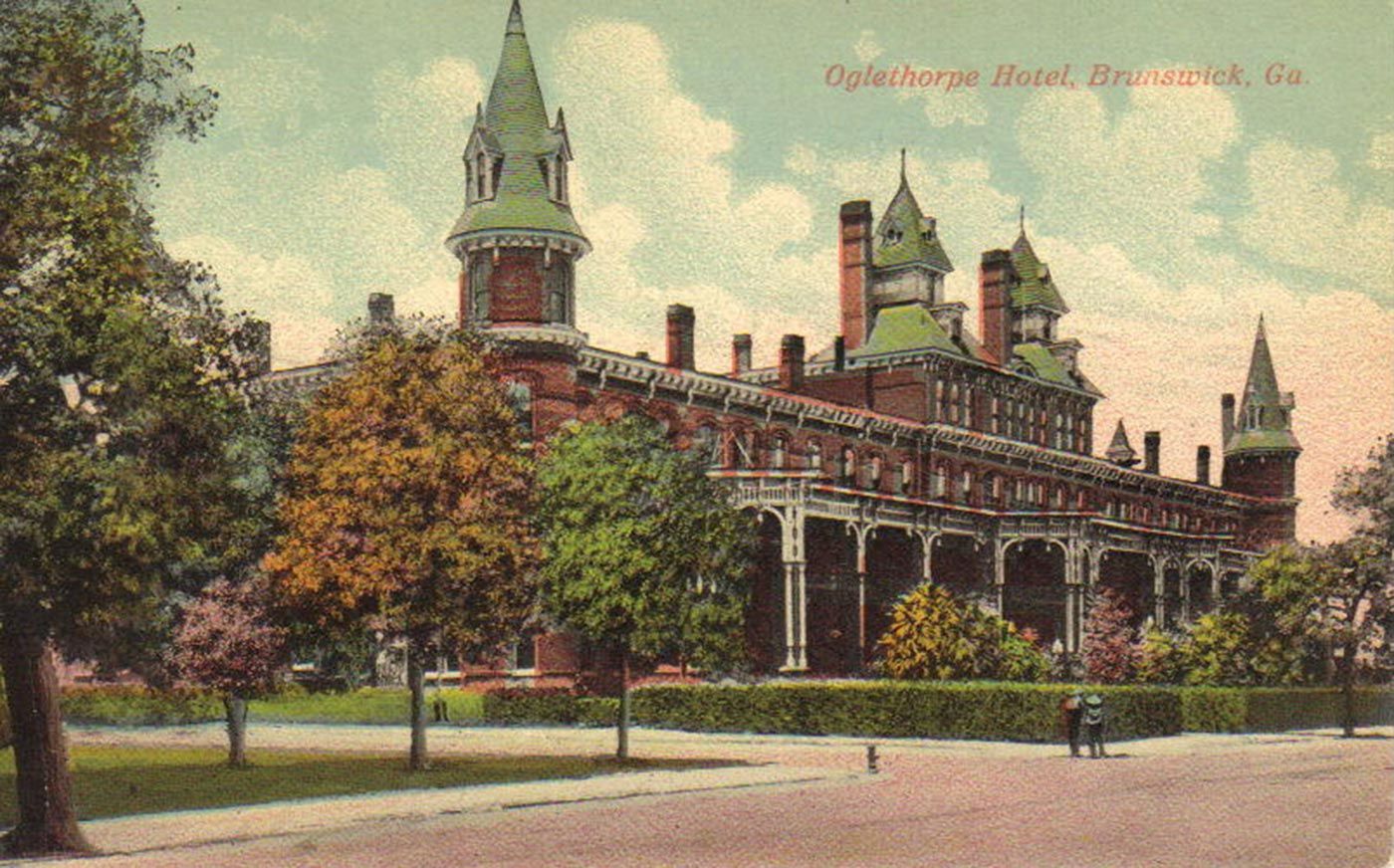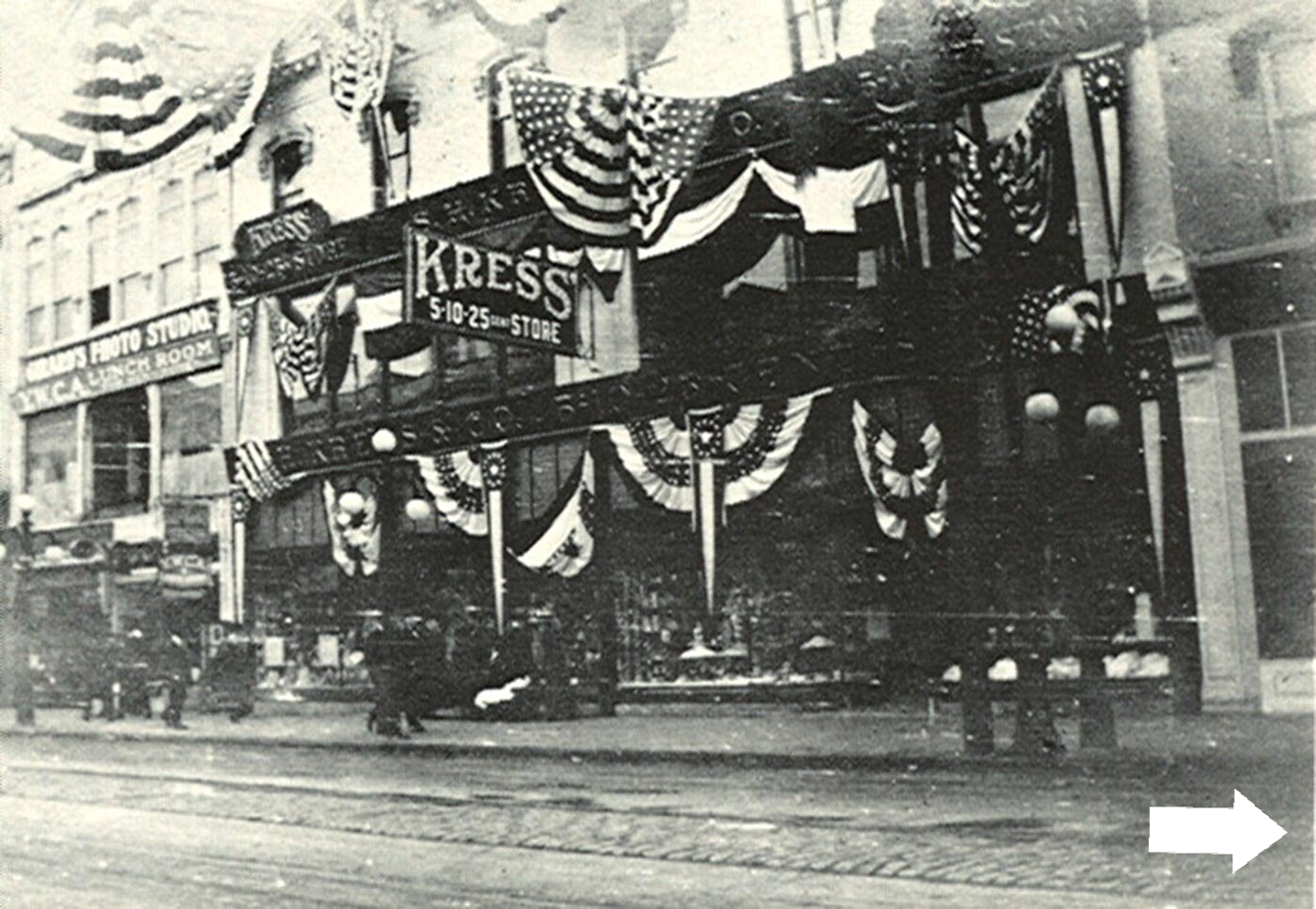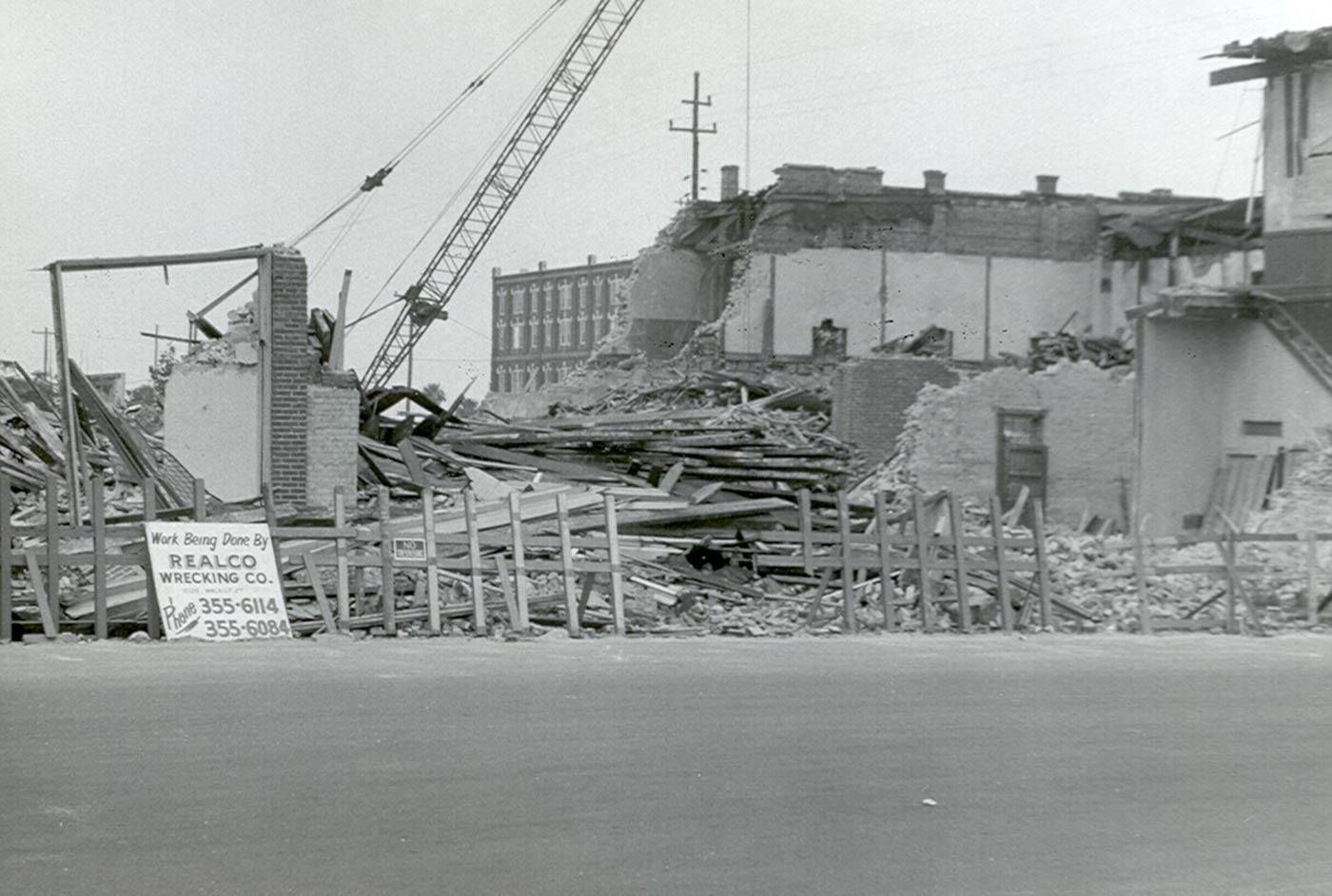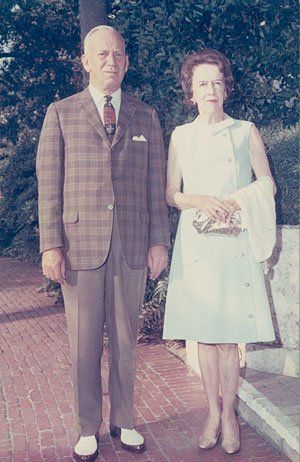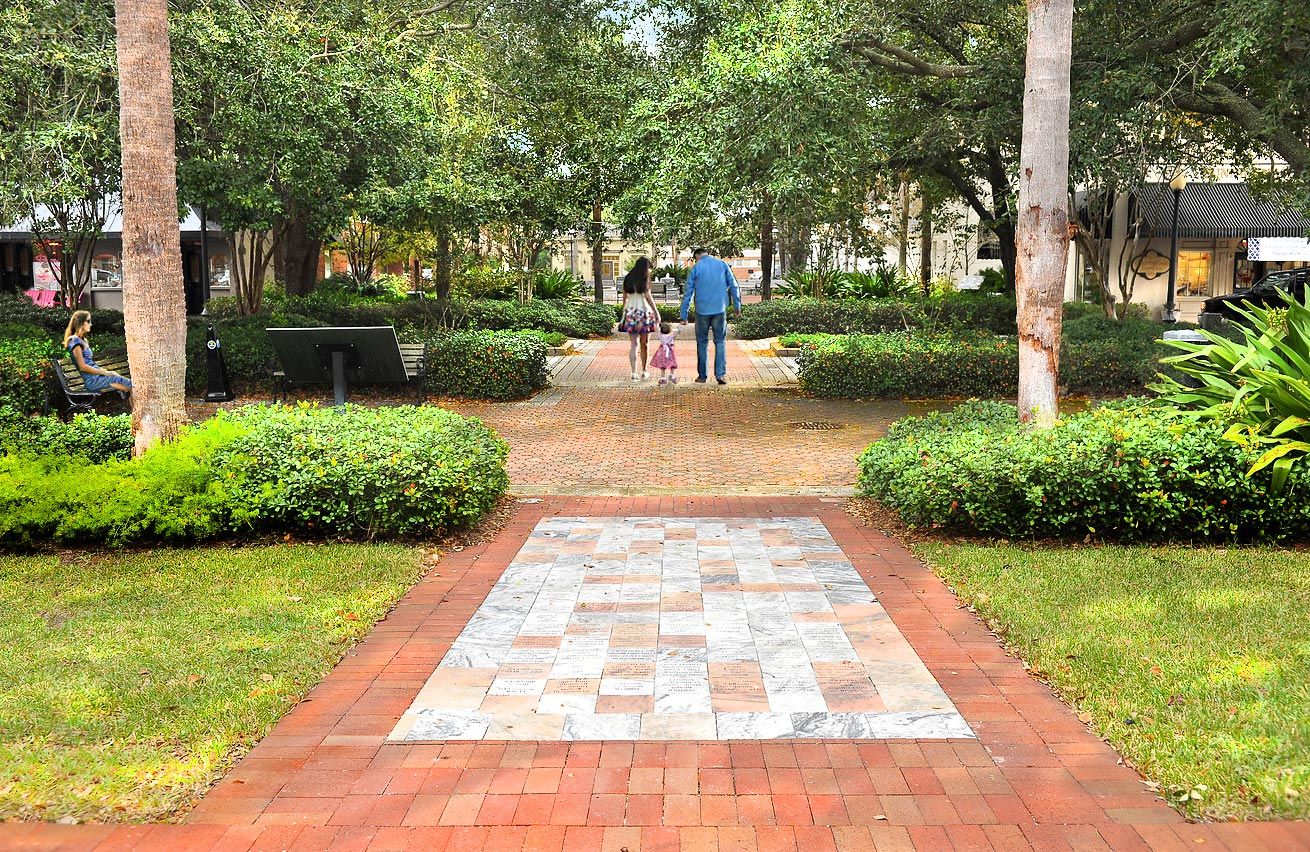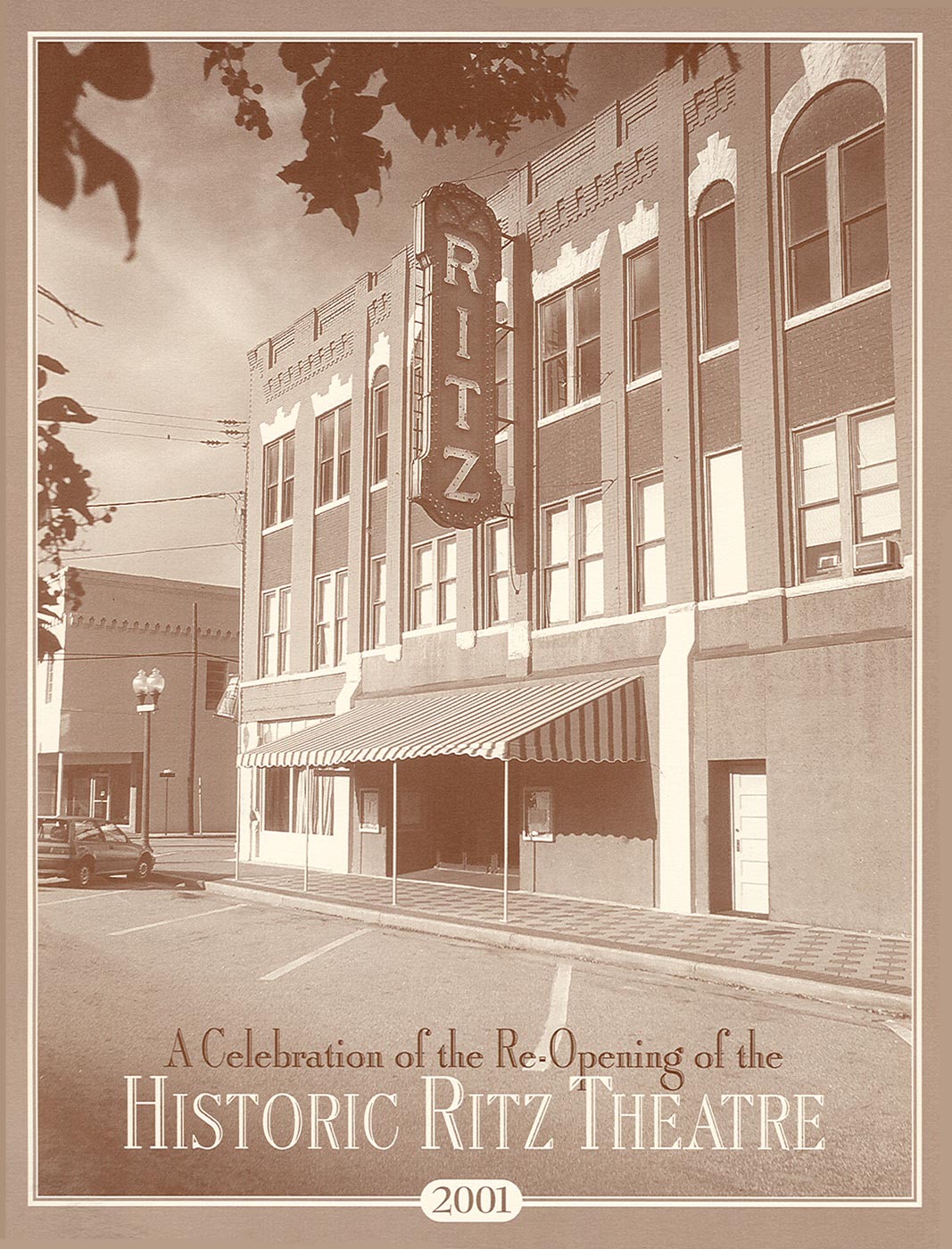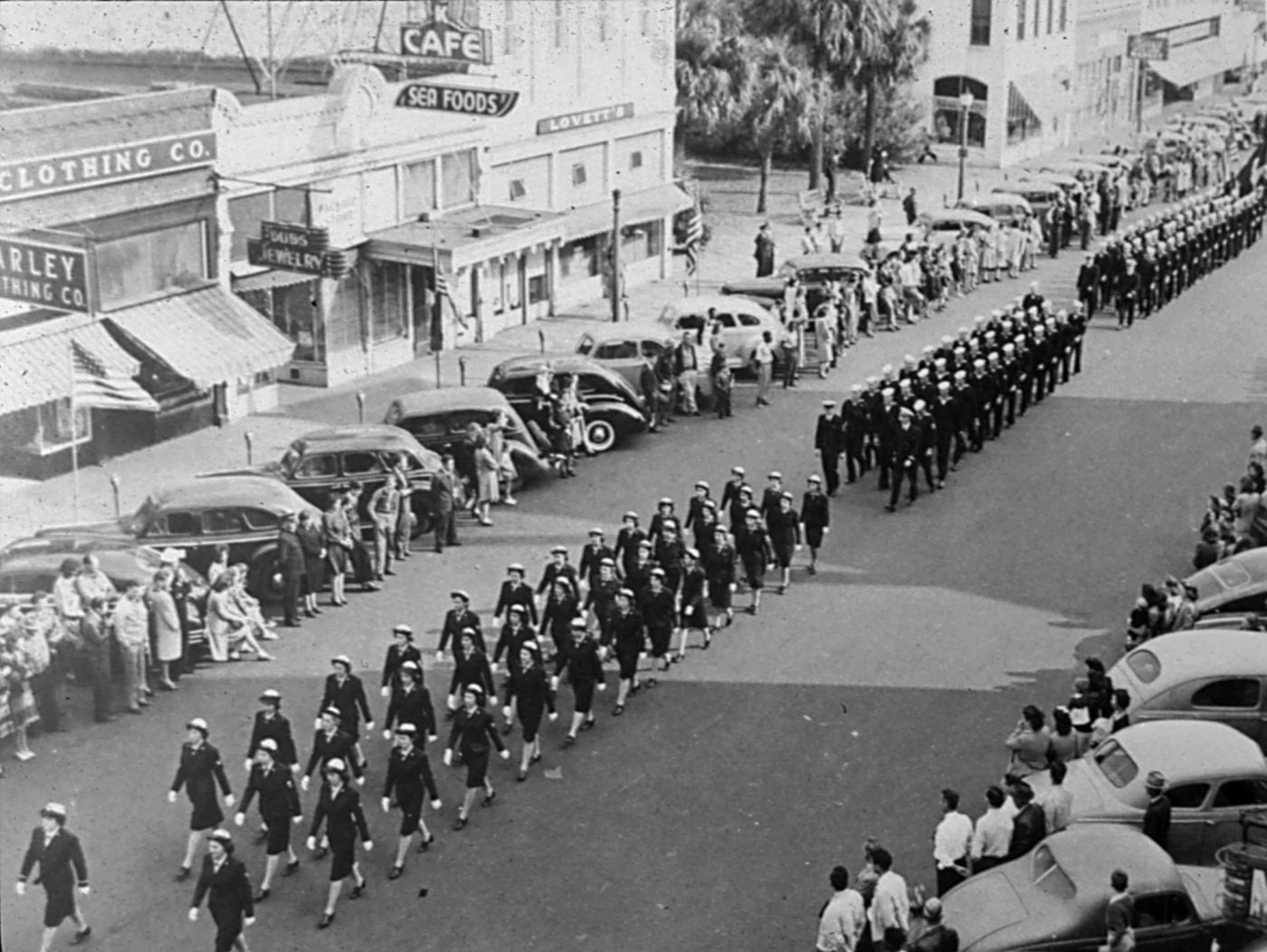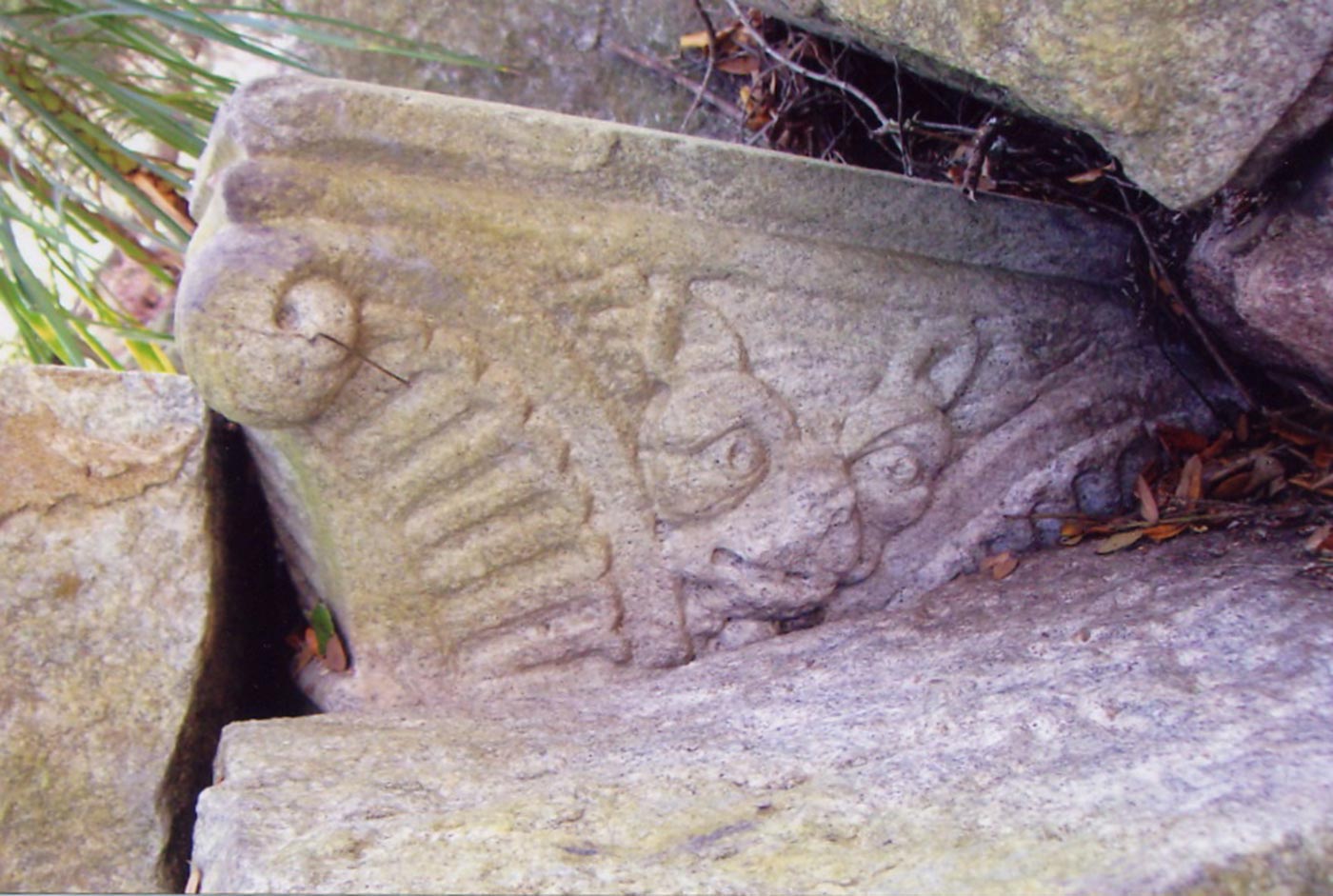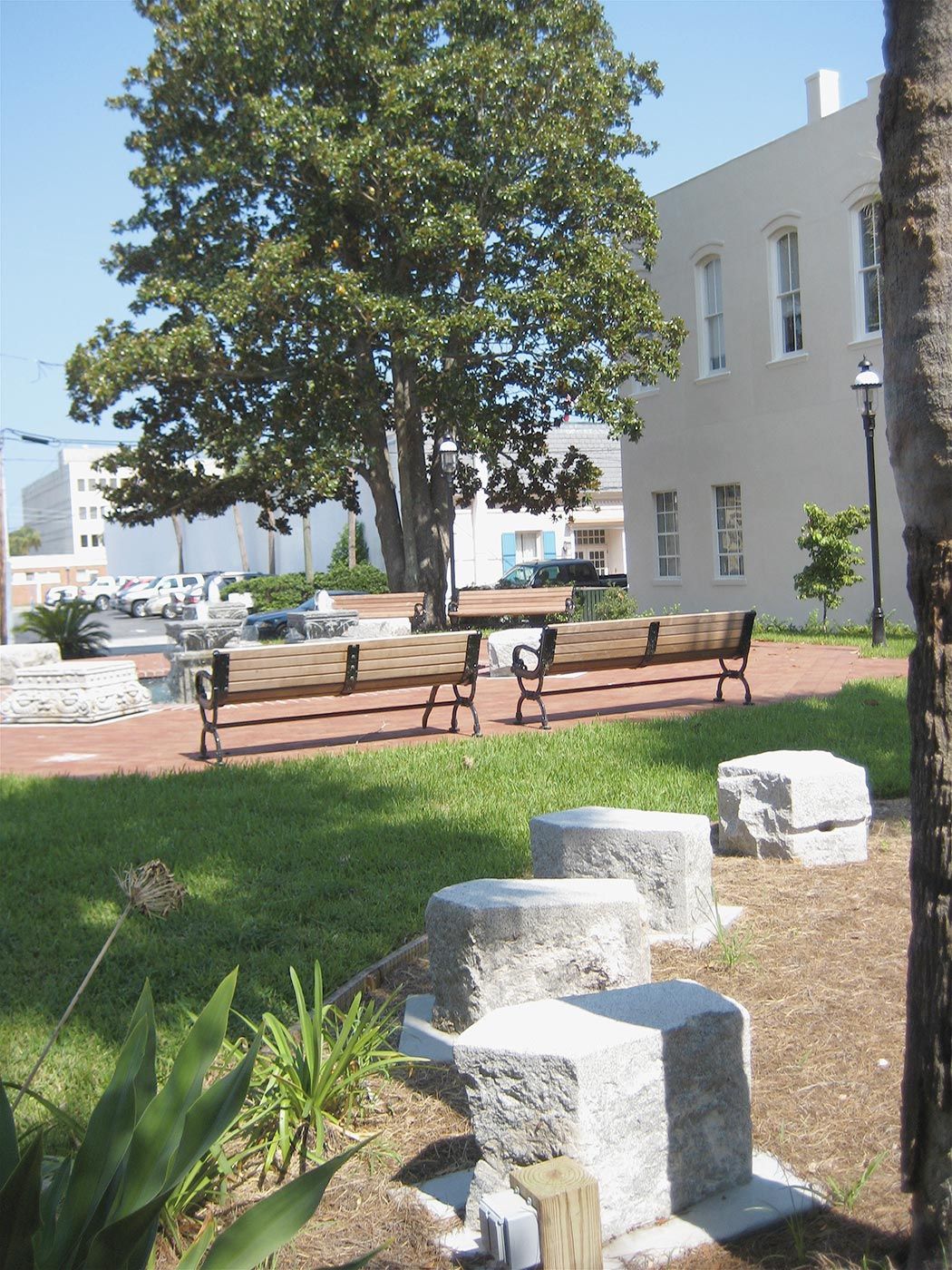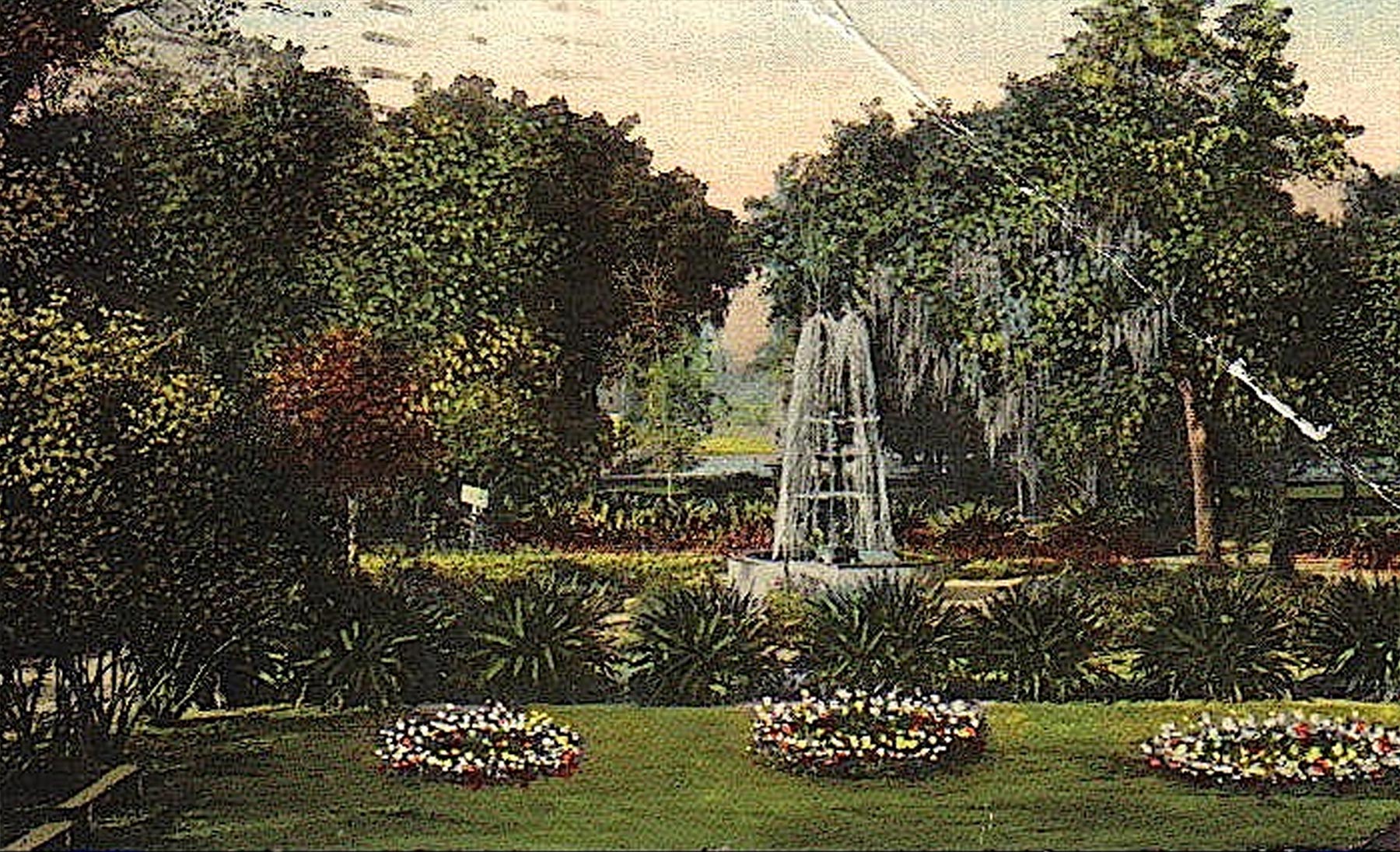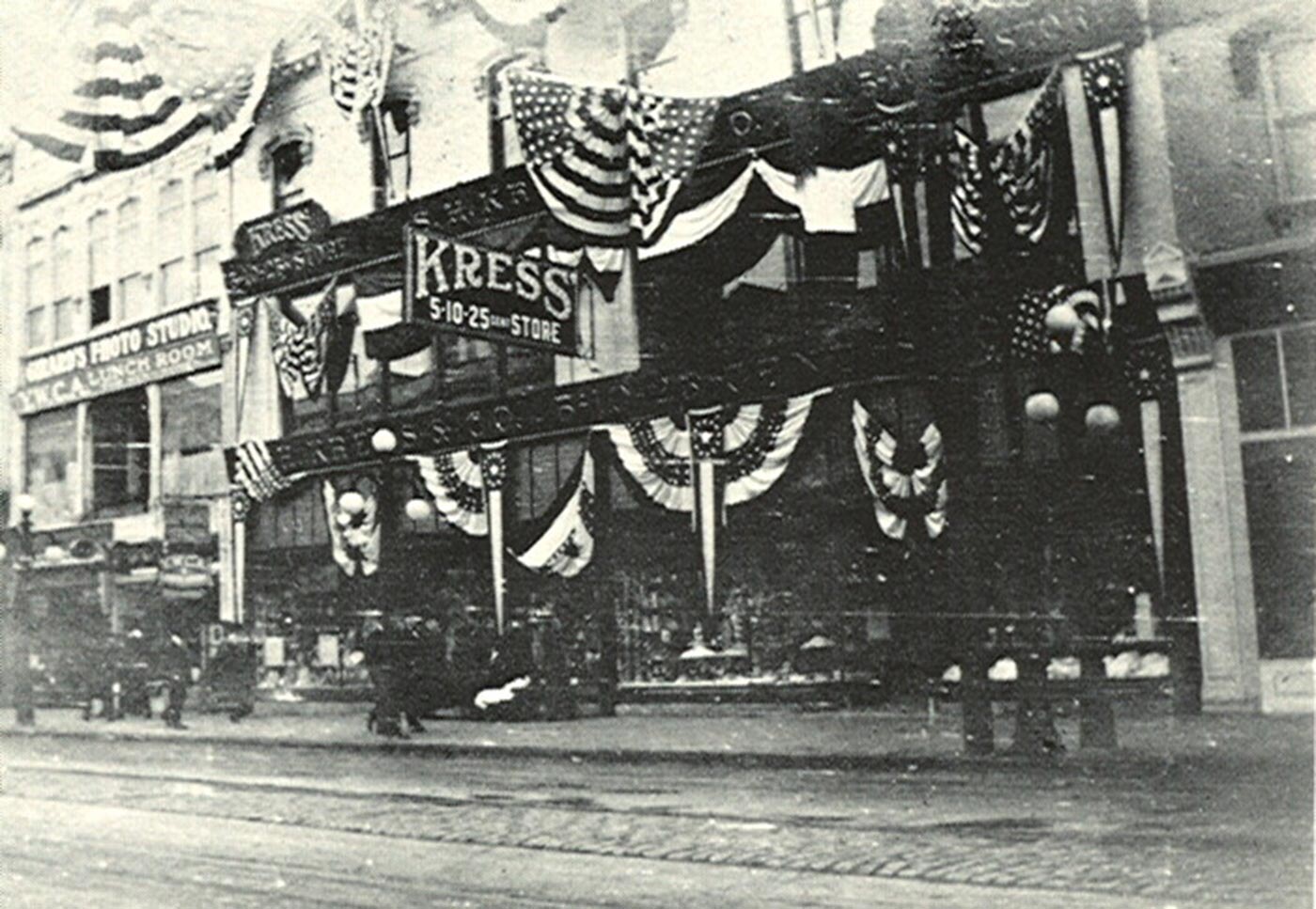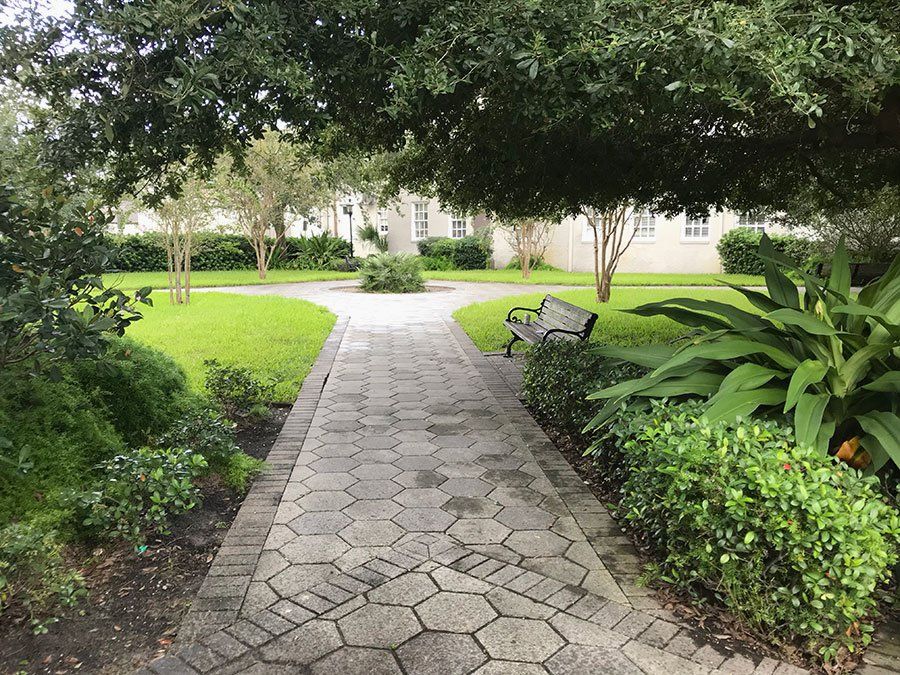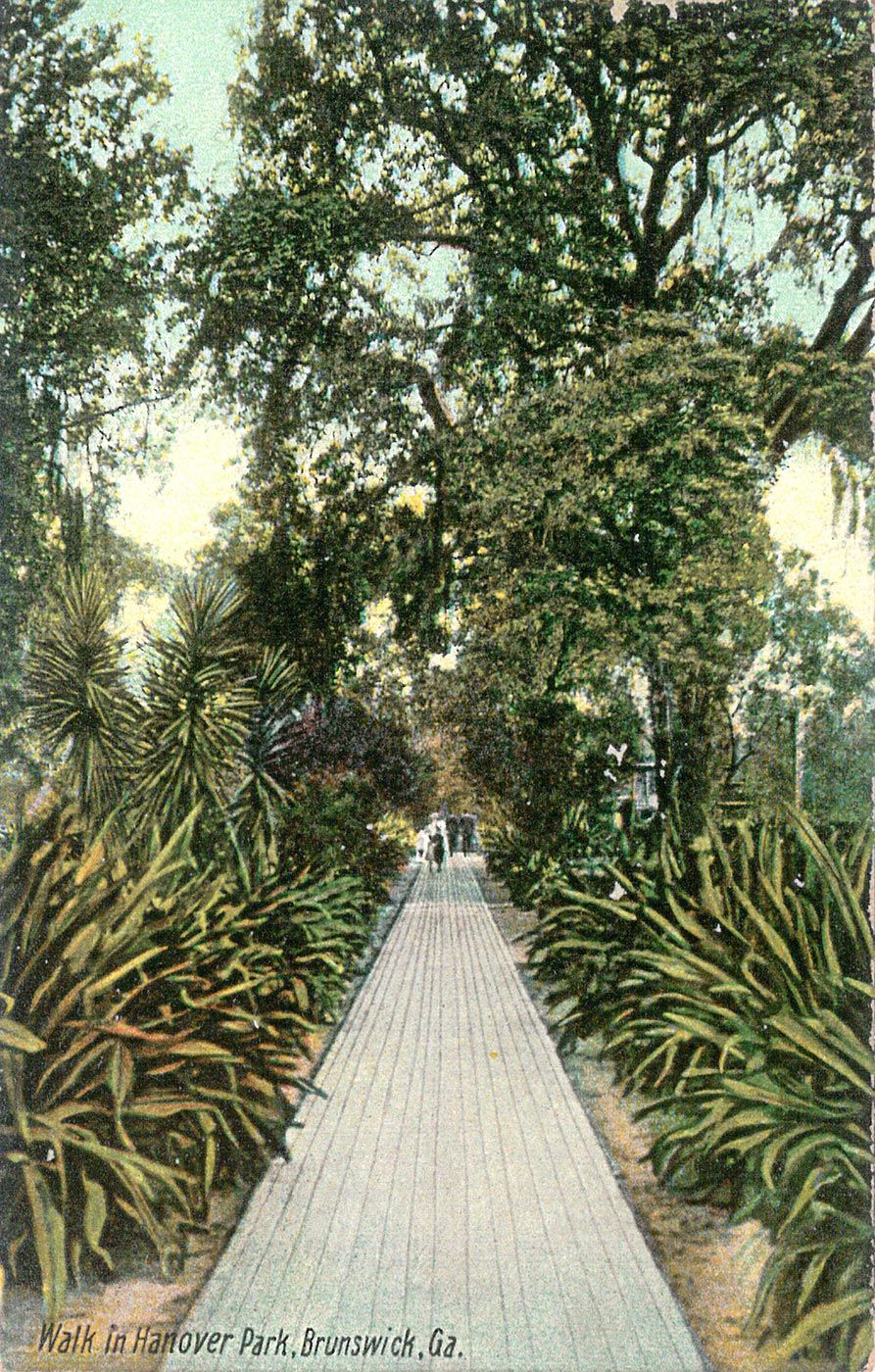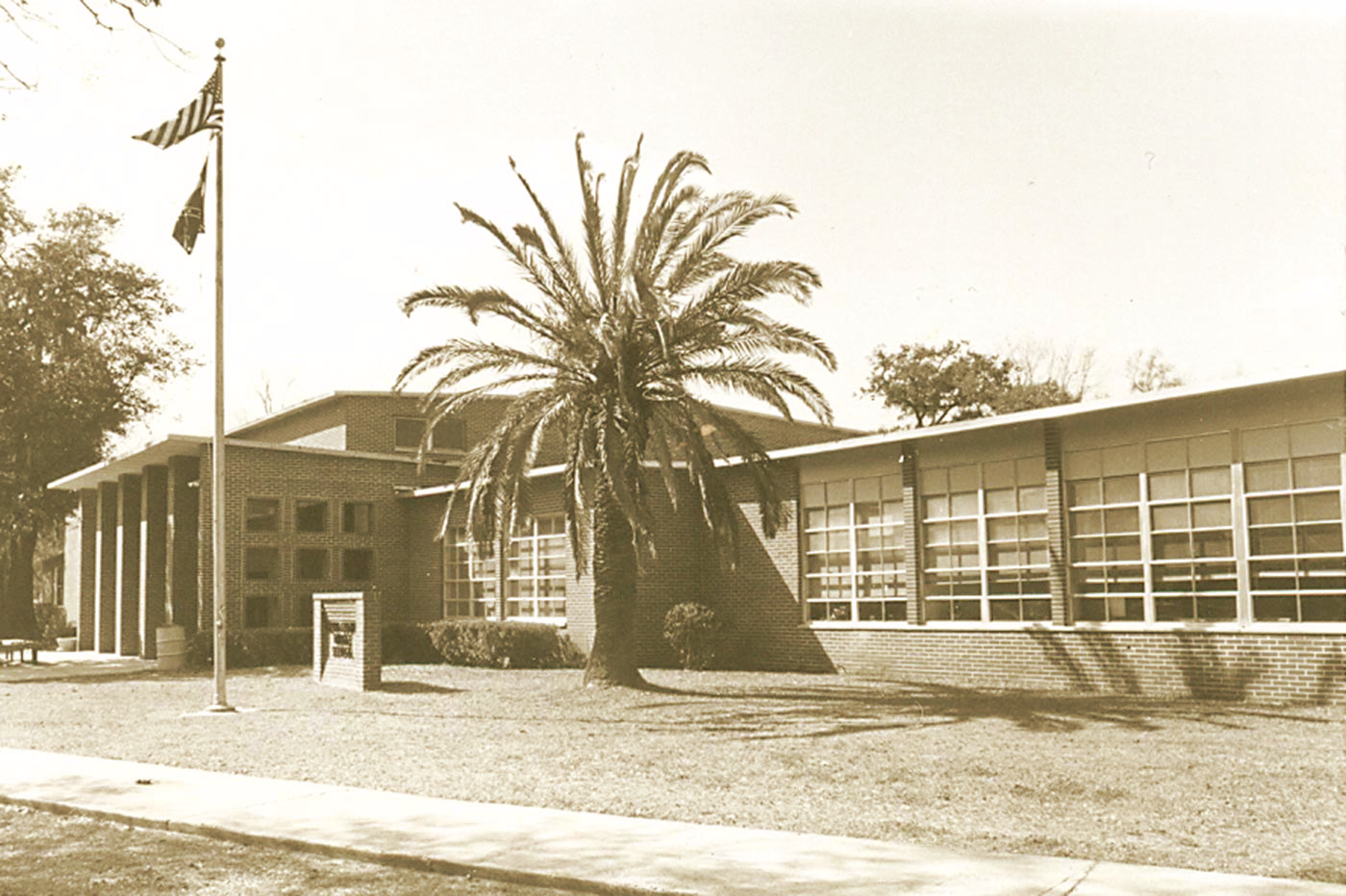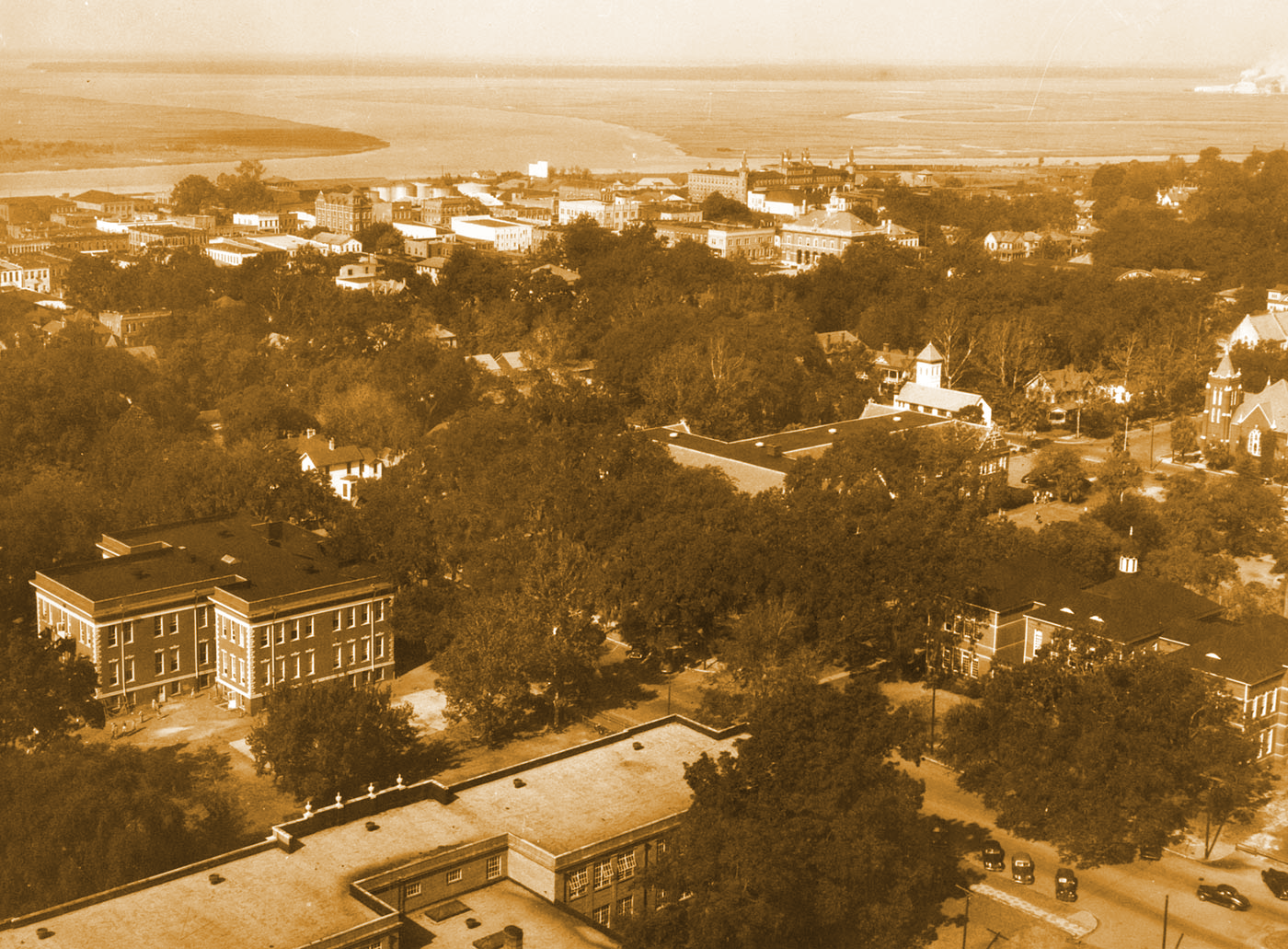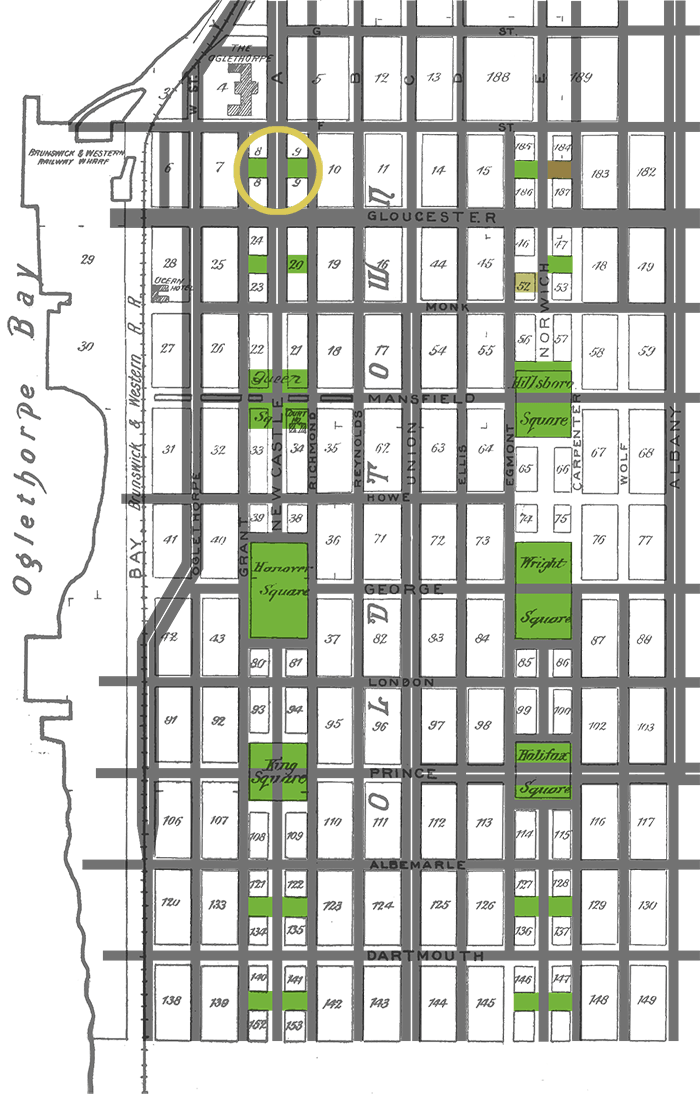White arrows denote location of the Square within the photo.

Machen Square History
Button
Machen Square History

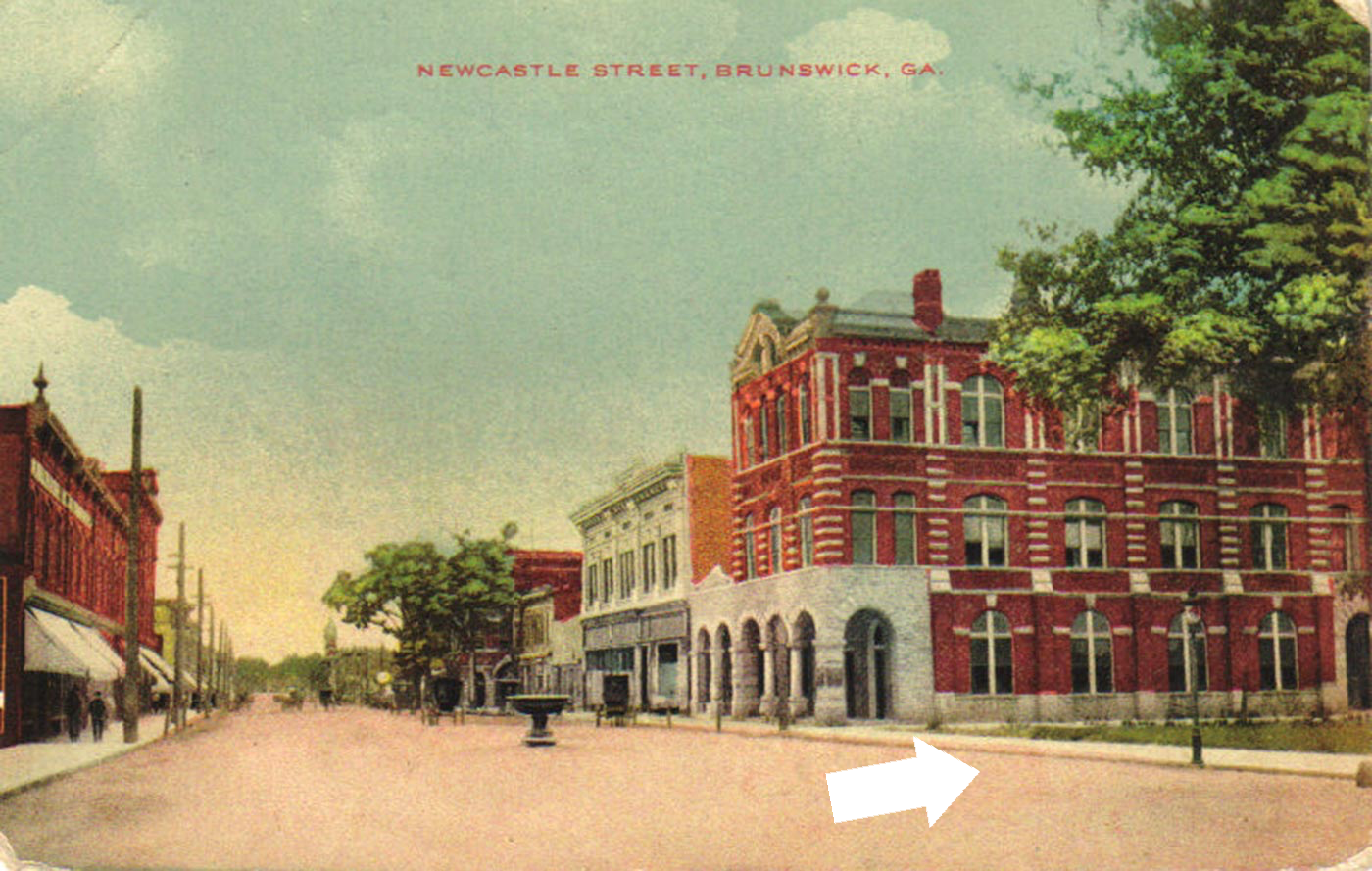
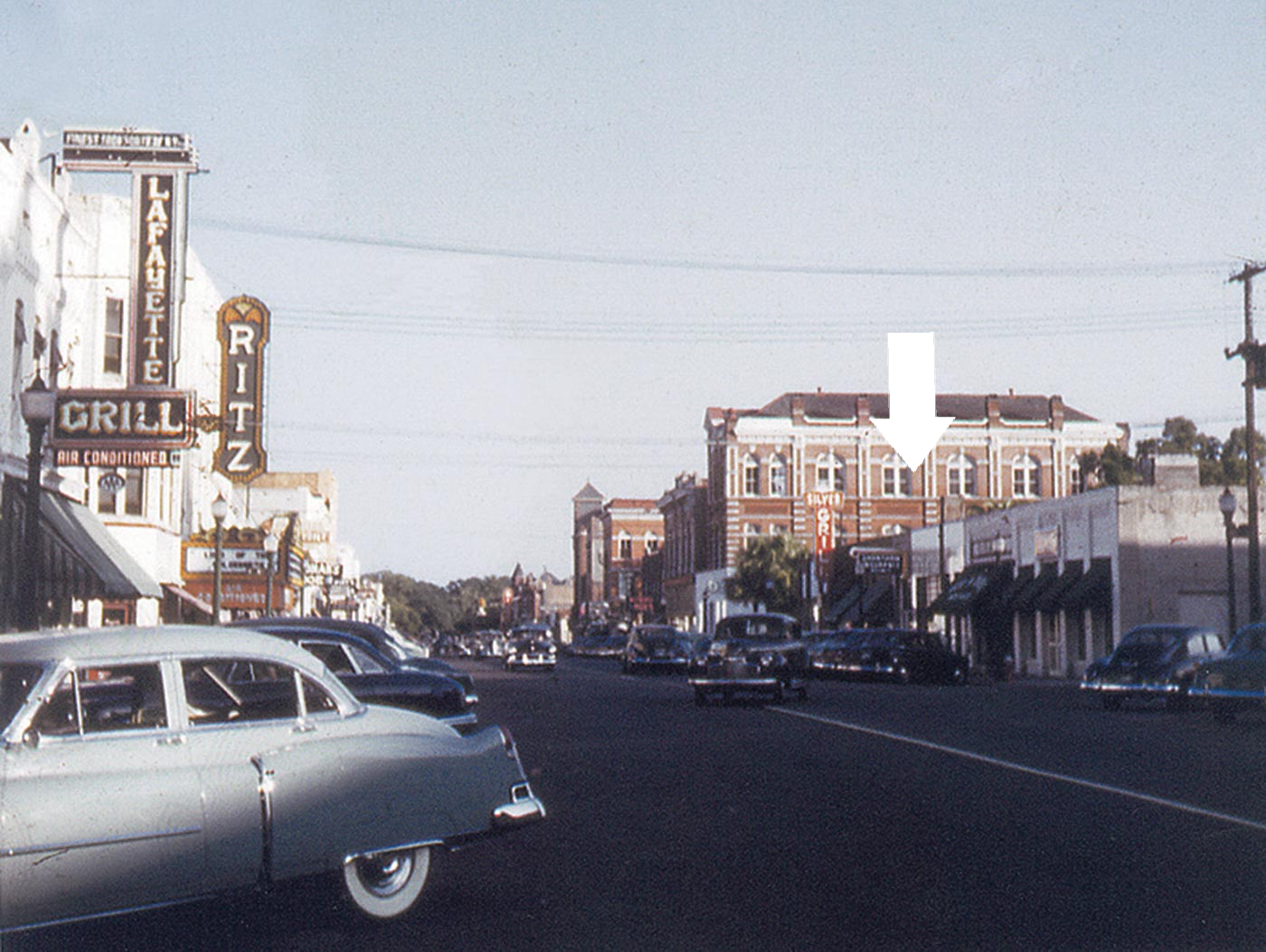
Newcastle Street looking south toward Machen Square West.
Machen Square West
THE OGLETHORPE HOTEL. Courtesy Golden Isles Arts & Humanities Association.
The S. H. Kress 5¢-10¢-25¢ store, circa 1905. Courtesy Golden Isles Arts & Humanities Association.
EXPLORE THE GOOGLE STREET VIEW MAP. INITIAL VIEW: The former Kress store, today.
THE OGLETHORPE HOTEL DURING DEMOLITION. Courtesy Golden Isles Arts & Humanities Association.
Engraved tiles at the entry of Machen Square West. Courtesy Troup Nightingale, Southeastern Photography, 2020.
Machen SQUARE EAST
THE GRAND OPERA HOUSE WITH ITS ORIGINAL BRICKWORK. Courtesy Golden Isles Arts & Humanities Association.
The Grand Opera House with the main awning removed. Courtesy Golden Isles Arts & Humanities Association.
Program for the reopening of the Ritz Theater after an extensive restoration in 2001. Courtesy Golden Isles Arts & Humanities Association.
Sailors and WAVES from Brunswick’s Naval Air Station Glynco march TOWARD Machen Square, 1944. Courtesy Golden Isles Arts & Humanities Association.
A stone capital from the bank building with a typical animal motif. Courtesy Carol Snyder.
EXPLORE THE GOOGLE STREET VIEW MAP.
More Machen Square Photos
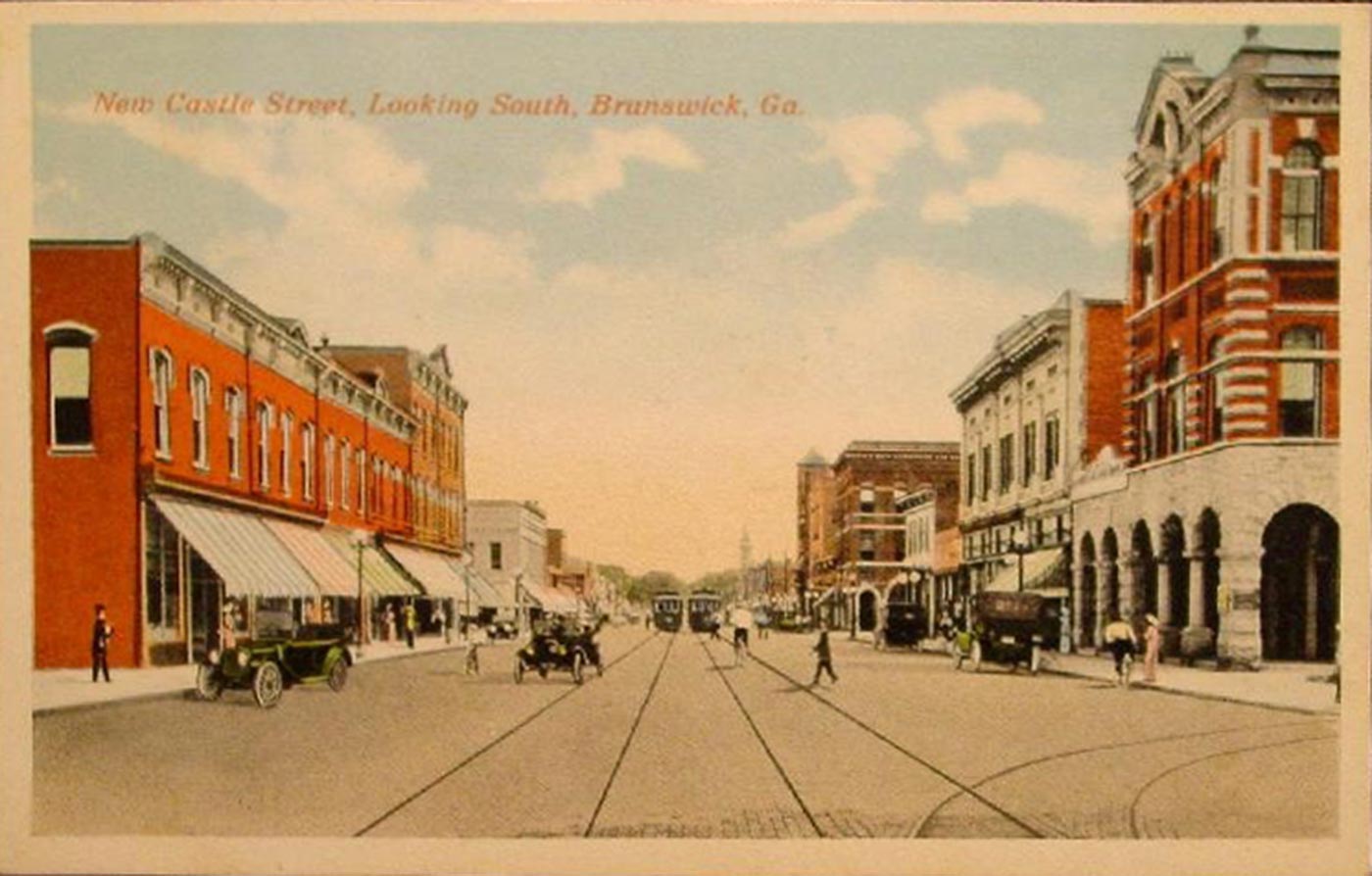
Slide title
National Bank of Brunswick at Machen Square West, Newcastle Street, cir. 1915-1920. Courtesy Golden Isles Arts & Humanities Association.
Button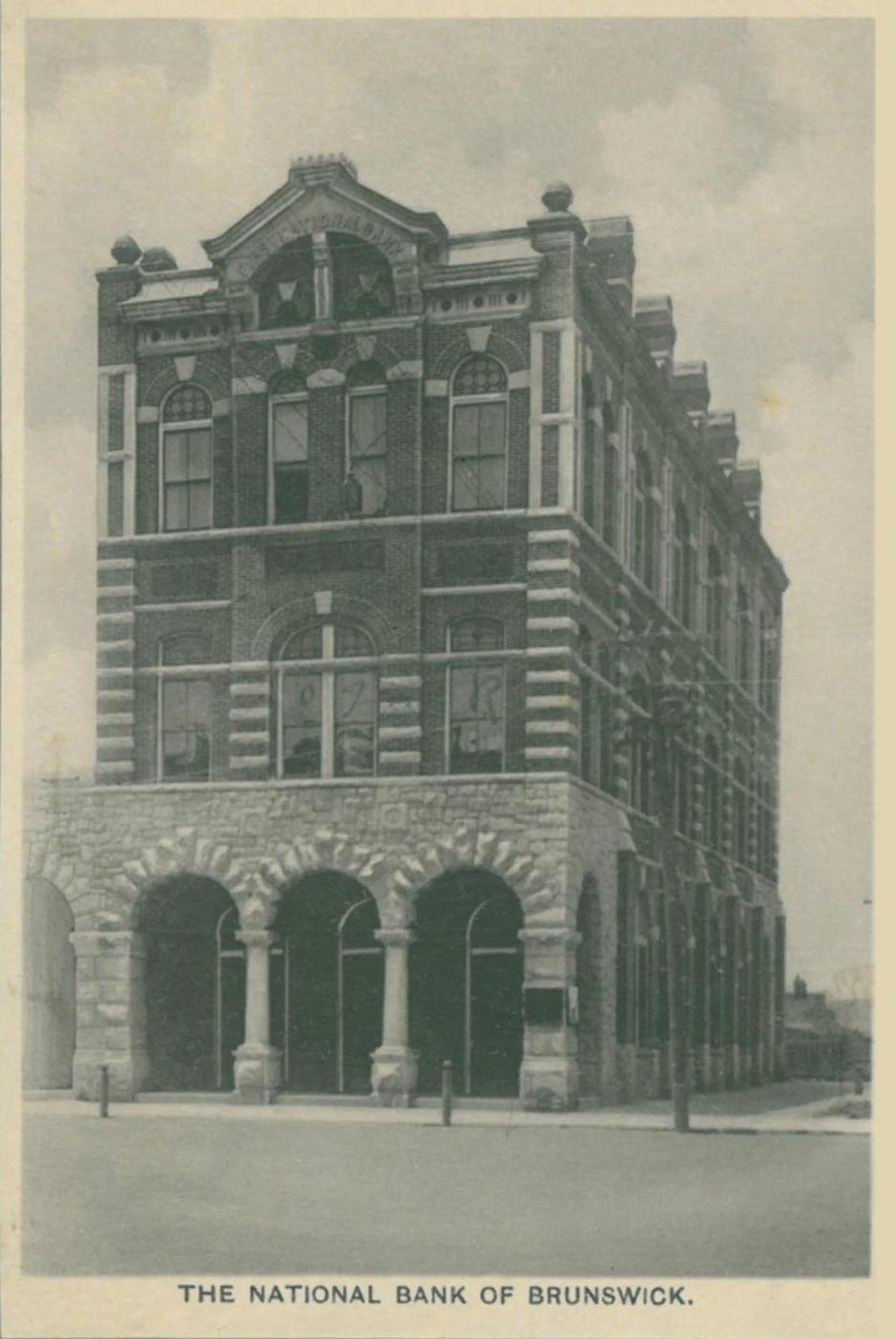
Slide title
The National Bank of Brunswick at Machen Square West, 1894. Courtesy Coastal Georgia Historical Society.
Button
Slide title
View across Newcastle Street over Machen Square, 1920. Courtesy Georgia Archives, Vanishing Georgia Collection.
Button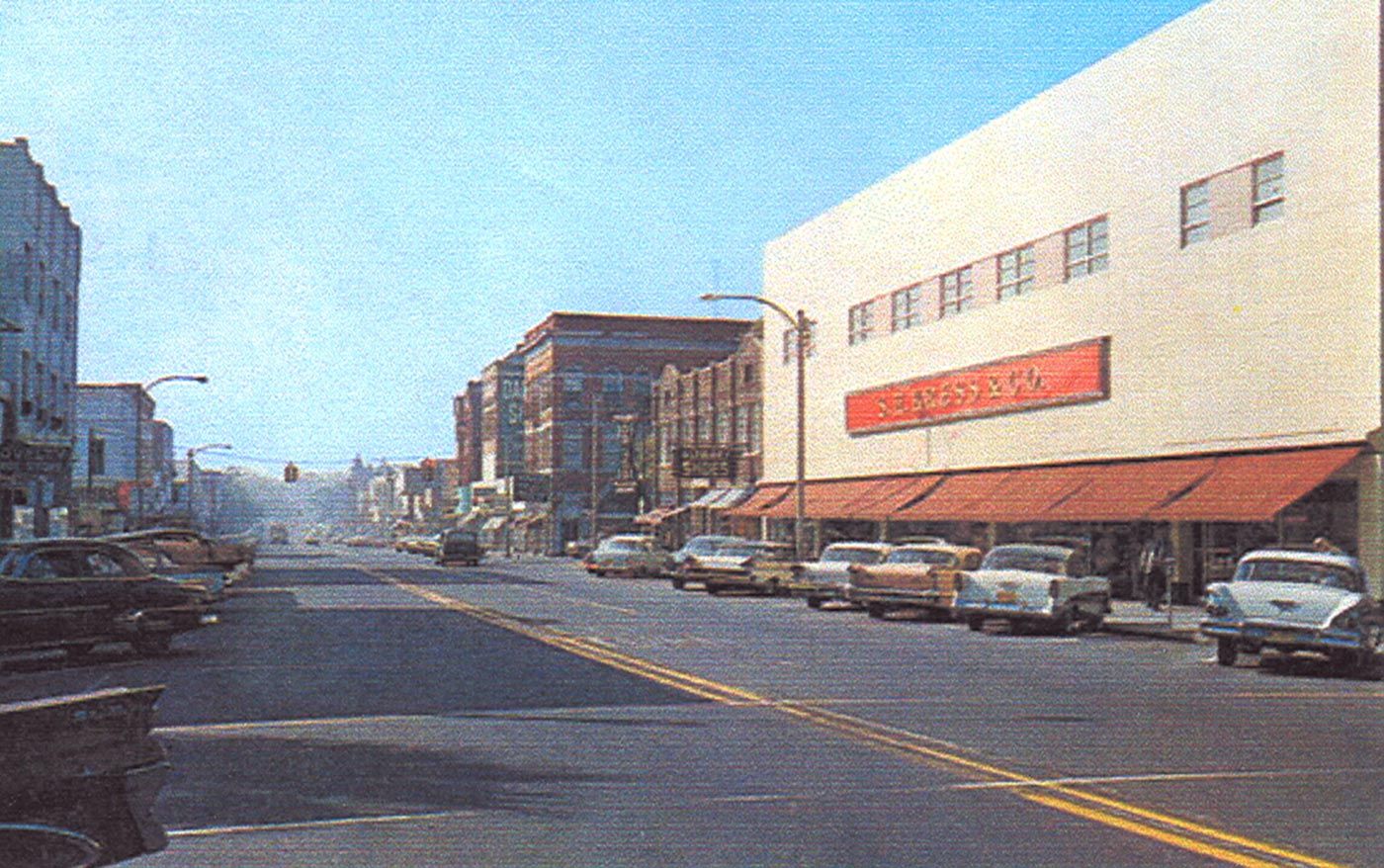
Slide title
Kress store on the site of the former National Bank of Brunswick at Machen Square West, cir. 1960. Courtesy Golden Isles Arts & Humanities Association.
Button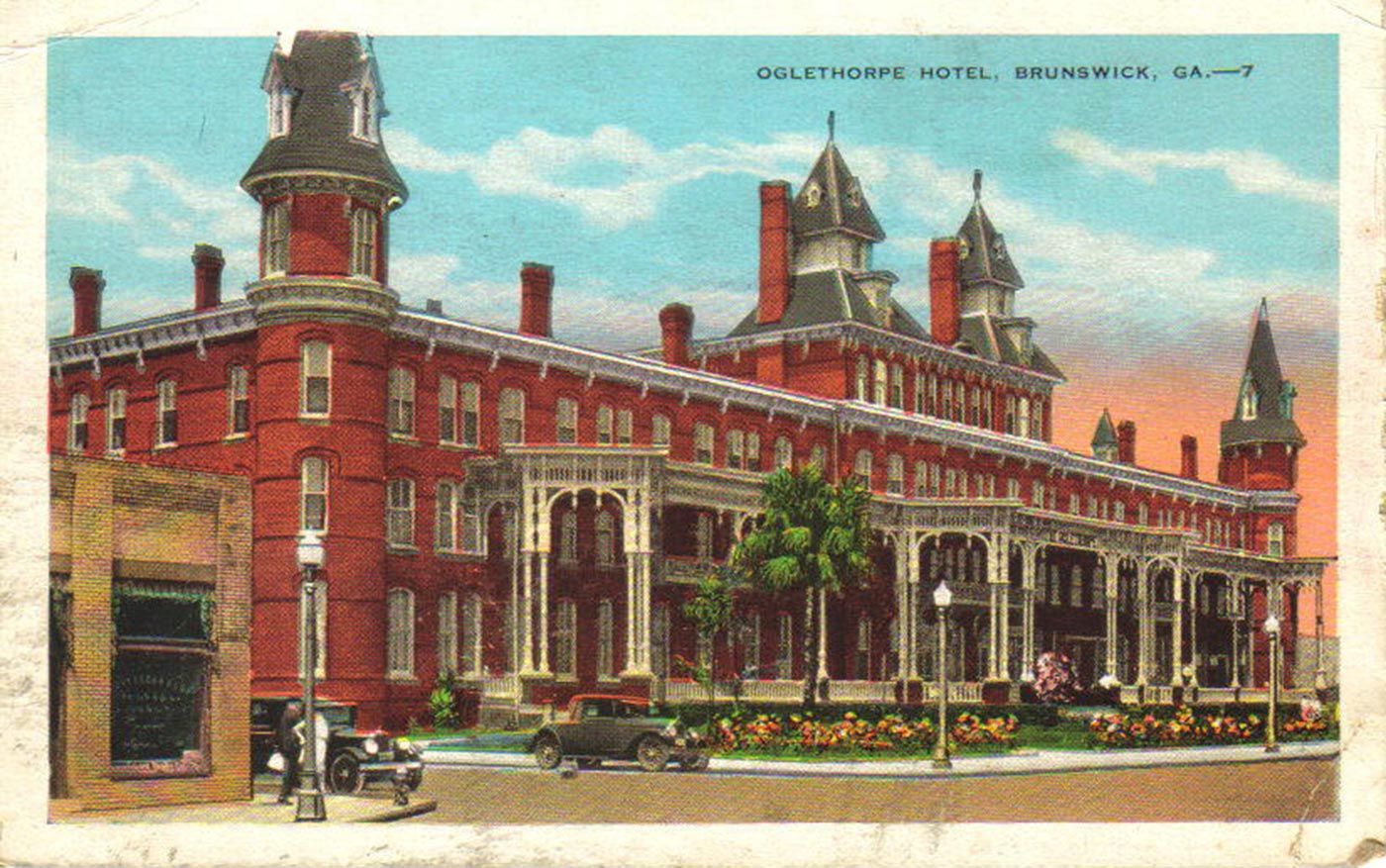
Slide title
The Oglethorpe Hotel near Machen Square, 1918. Courtesy Golden Isles Arts & Humanities Association.
Button
Slide title
The Cabana Inn, on the site of the former Oglethorpe Hotel near Machen Square, cir. 1960. Courtesy Golden Isles Arts & Humanities Association.
Button
Slide title
The Grand Opera House and offices for the Brunswick & Birmingham Railroad near Machen Square East, 1899. Courtesy Golden Isles Arts & Humanities Association.
Button
Slide title
The Ritz Theatre, formerly the Grand Opera House, 1958. Courtesy Golden Isles Arts & Humanities Association.
Button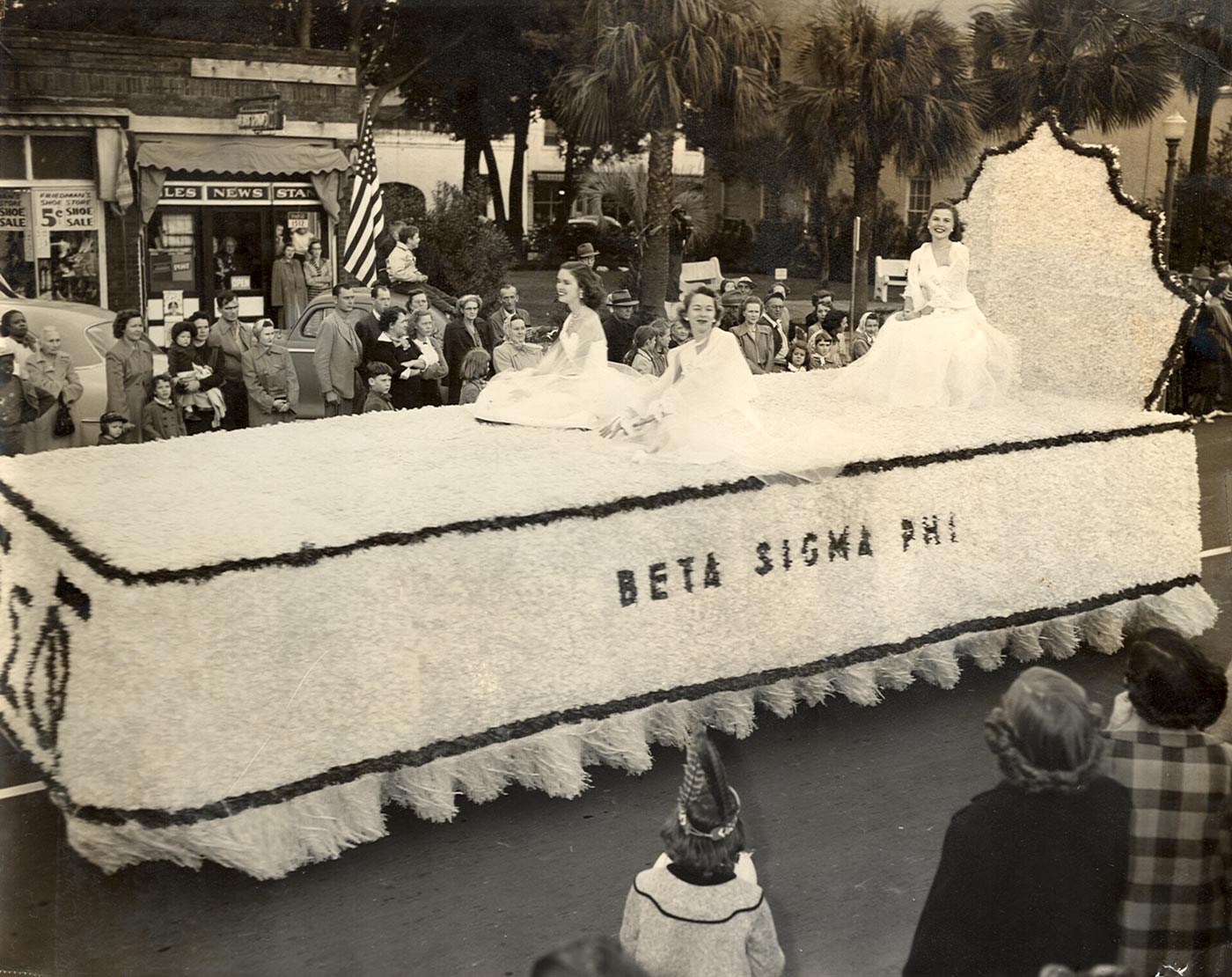
Slide title
Parade passing in front of Machen Square East in the mid-1950s. Courtesy Golden Isles Arts & Humanities Association.
Button

